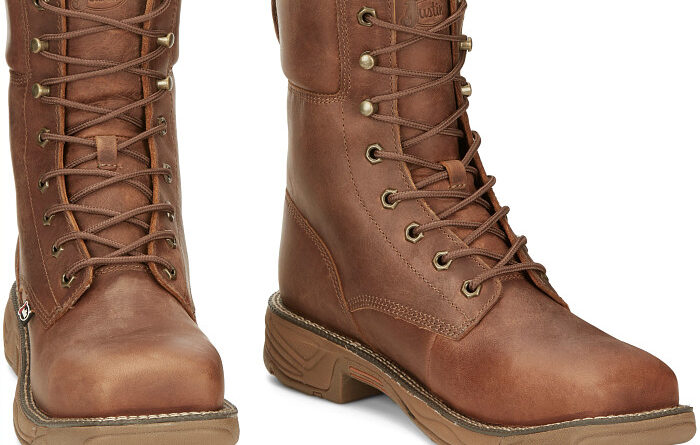
This post may contain affiliate links which means I may receive a commission for purchases made through links. Learn more on my Private Policy page.
Overview of Winter Work Boots
When the cold weather hits, it’s essential to have the right gear to keep you warm and protected. Winter work boots are designed specifically for working in cold and harsh environments, providing the necessary insulation and support to keep your feet comfortable throughout the day. In this article, we will explore the importance of winter work boots in cold weather, discuss factors to consider when choosing the best pair, and take a closer look at the common materials used in their construction.
Importance of Winter Work Boots in Cold Weather
Working in winter conditions can be challenging, but with the right pair of winter work boots, you can tackle any job with confidence. These boots are designed to provide insulation and keep your feet warm, even in extremely low temperatures. Additionally, winter work boots offer superior traction to prevent slips and falls on icy surfaces, ensuring your safety on the job.
Factors to Consider When Choosing Winter Work Boots
When selecting winter work boots, several factors should be taken into account. Firstly, look for boots with excellent insulation properties to keep your feet warm. Waterproof or water-resistant features are also crucial to keep your feet dry and protected from snow and moisture. Proper fit and comfort should never be compromised, as you will be wearing these boots for long periods. Additionally, consider the type of work you will be doing and choose boots with the appropriate safety features and support.
Common Materials Used in Winter Work Boots
Winter work boots are typically made from various materials, each with its own benefits. Insulating materials such as Thinsulate and synthetic fibers are commonly used to keep the feet warm. Heavy-duty leather is a popular choice for the upper portion of the boot, offering durability and protection against the elements. Rubber outsoles are often used for their excellent grip on slippery surfaces, and some boots also incorporate steel toes for additional protection.
With the right pair of winter work boots, you can stay warm, comfortable, and safe during the coldest of days. Consider the importance of insulation, waterproofing, and proper fit when choosing your winter work boots, and explore the various materials and safety features available to find the perfect pair for your needs.
Insulation and Warmth in Winter Work Boots
When it comes to winter work boots, insulation and warmth are two crucial factors to consider. The right pair of boots can keep your feet cozy and protected from the biting cold, allowing you to focus on your work without uncomfortable distractions. So, what should you look for in a pair of winter work boots to ensure optimum insulation?
Types of Insulation in Winter Work Boots
There are several types of insulation materials commonly used in winter work boots. Thinsulate, for example, is a popular choice due to its lightweight and efficient insulating properties. Other options include wool, fleece, and foam insulation. Each material offers different levels of warmth, so it’s important to choose the one that suits your working conditions.
Recommended Insulation Levels for Different Temperatures
The level of insulation you need in your winter work boots depends on the temperatures you’ll be facing. If your work takes you in extremely cold temperatures, like in Arctic environments, boots with higher insulation ratings are recommended. On the other hand, for milder wintery conditions, boots with medium insulation levels should suffice.
Additional Features for Heat Retention
Besides insulation, there are other features that contribute to heat retention in winter work boots. Look for boots with moisture-wicking properties to keep your feet dry and warm. Insulated insoles, padded collars, and toe caps also help to retain heat and provide extra comfort.
Remember, finding the best winter work boots involves considering both the insulation materials and additional features. With the right pair, you’ll be equipped to face any winter work environment, keeping your feet warm, comfortable, and protected.
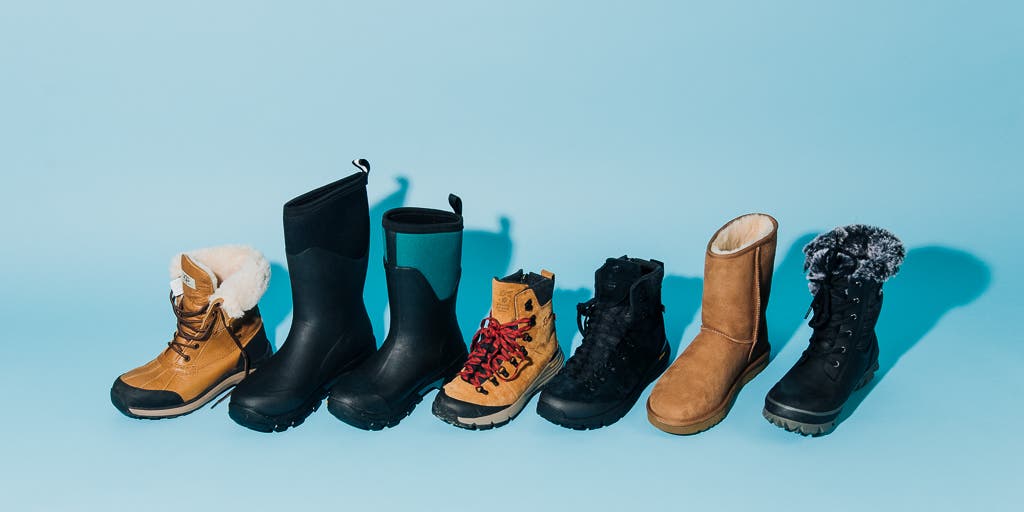
This image is property of cdn.thewirecutter.com.
Waterproofing and Weather Protection
When it comes to choosing the perfect winter work boots, waterproofing and weather protection are paramount. Nothing can make a work day more miserable than having wet, freezing feet. With all the different styles and brands available, it can be overwhelming to determine which ones offer the best protection against water and extreme weather conditions.
Importance of Waterproofing in Winter Work Boots
Having a waterproof feature in your winter work boots is essential. It not only keeps your feet dry but also prevents water from seeping into the boots and causing discomfort or even frostbite. Waterproofing technology has come a long way, with various materials and construction methods designed to provide maximum protection against moisture and snow.
Different Levels of Water Resistance
Not all winter work boots are waterproof to the same extent. Some boots offer basic water resistance, which means they can withstand light rain or snow. Others are fully waterproof, providing complete protection even in the harshest conditions. It’s important to consider your working environment and the level of water exposure you may encounter to choose the appropriate level of water resistance.
Additional Weather Protection Features
Apart from waterproofing, winter work boots may also come with additional weather protection features. These could include insulation, such as Thinsulate or neoprene linings, to keep your feet warm in frigid temperatures. Additionally, some boots have built-in gaiters and adjustable closures to prevent snow and debris from entering the boots.
When selecting your winter work boots, prioritize waterproofing and consider the level of water resistance and additional weather protection features that best suit your needs. Remember, keeping your feet warm and dry is crucial for a comfortable and productive workday.
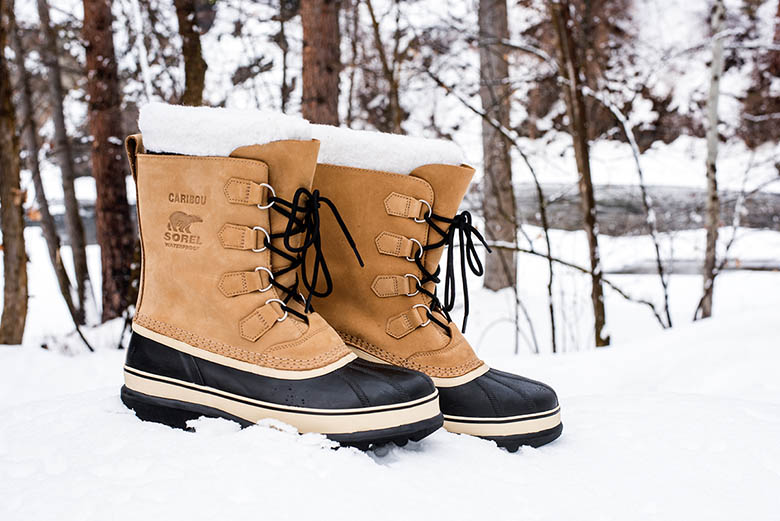
This image is property of www.switchbacktravel.com.
Grip and Traction for Slippery Surfaces
When it comes to winter work boots, one of the most crucial features is their ability to provide grip and traction on slippery surfaces. Whether you work in construction, agriculture, or any other industry that requires you to be on your feet, having the right pair of boots can make all the difference. So, what should you look for?
Types of Outsoles for Winter Work Boots
First, let’s talk about the different types of outsoles that are designed specifically for winter conditions. Vibram outsoles are highly popular due to their exceptional grip and durability. They offer excellent traction on ice and wet surfaces. Lug soles, on the other hand, feature deep and widely spaced treads, which provide more surface area in contact with the ground. This design helps to prevent slips and falls on icy or snowy terrain.
Features for Enhanced Traction
Apart from the outsole, other features contribute to enhanced traction. Insulated boots with a waterproof membrane help keep your feet warm and dry, while also preventing water from seeping in. Look for boots with a non-slip tread pattern that offers maximum grip, even in the most challenging conditions. Some brands also incorporate technologies like arch support and cushioning, allowing for better stability and comfort when navigating slippery surfaces.
Cleats and Ice Grippers
For those who encounter extreme icy conditions, consider boots with cleats or ice grippers. Cleats are like tiny spikes that can be attached to the outsole for extra grip on ice. Ice grippers, on the other hand, have a strap system that wraps around the boot and provides traction on icy surfaces. These additional accessories can significantly enhance the safety and performance of your winter work boots.
When choosing the best winter work boots, prioritize grip and traction to ensure your safety and productivity. Take into account the type of outsole, features for enhanced traction, and possibly consider adding cleats or ice grippers to your boots. With the right pair of winter work boots, you can confidently tackle any slippery surface that comes your way. Stay safe and warm!
Durability and Construction
When it comes to winter work boots, durability and construction are key factors to consider. You need a pair that can withstand the harsh conditions, provide ample support, and keep your feet warm and dry throughout the day. In this section, we will delve into the materials and construction methods that make these boots the best in terms of longevity.
Materials and Construction Methods for Longevity
The top winter work boots are made from high-quality materials that are designed to last. Look for boots that are crafted from premium leather or synthetic materials, as these offer excellent durability and resistance to wear and tear. Additionally, pay attention to the construction methods used. Boots with reinforced toe caps and heel guards provide extra protection against impact and abrasion, ensuring they hold up well in rugged environments.
Reinforced Toe Caps and Heel Guards
To ensure your feet stay safe and secure, opt for winter work boots that feature reinforced toe caps and heel guards. These reinforcements provide added strength to the boots, protecting your toes and heels from potential injuries and prolonging the lifespan of the footwear.
Seam Sealing and Reinforced Stitching
Another crucial aspect of durability is the seam sealing and reinforced stitching. This feature prevents water from seeping into the boots, keeping your feet dry and comfortable even in wet conditions. Reinforced stitching adds extra strength to the boots, preventing them from coming apart at the seams and enhancing their overall durability.
With these in mind, invest in a pair of winter work boots that offer exceptional durability and construction. By doing so, you can have peace of mind knowing that your feet will be well-protected and comfortable throughout the winter season.
Comfort and Fit
When it comes to winter work boots, comfort and fit are two important factors to consider. After all, you’ll be spending long hours on your feet in potentially harsh conditions, so you want to make sure your feet are well taken care of.
Choosing the Right Size for Winter Work Boots
Selecting the correct size is crucial in order to ensure optimal comfort. Ill-fitting boots can lead to blisters, soreness, and even foot problems. It’s important to measure your feet accurately and refer to the manufacturer’s size chart when purchasing your winter work boots. Remember to consider any additional layers or thick socks you’ll be wearing to keep your feet warm in chilly temperatures.
Features for Comfort and Support
Look for boots that offer ample cushioning and support. The midsole should provide good shock absorption, while also being lightweight. A comfortable insole and padded collar can make a significant difference in all-day comfort. Additionally, boots with arch support can help alleviate foot fatigue.
Adjustability and Customization Options
Consider boots that offer adjustability features to ensure a snug fit. Many winter work boots have laces or straps that allow you to customize the tightness around the ankle and calf. This adjustability can help provide a secure and comfortable fit while keeping cold air and snow out.
When selecting your winter work boots, prioritize comfort and fit to keep your feet happy and protected throughout the chilly season.
Safety Features
When it comes to winter work boots, safety is of utmost importance. You need a pair of boots that will not only keep your feet warm and dry but also provide the necessary protection against hazards in the workplace. In this section, we will discuss the importance of safety features in winter work boots and why they should be a top priority when making your purchase decision.
Importance of Safety Features in Winter Work Boots
Winter conditions can be treacherous, with slippery surfaces and cold temperatures posing additional risks to workers. That’s why it is crucial to choose winter work boots that are equipped with the right safety features to keep you safe and comfortable throughout the season.
Slip Resistance and ASTM Standards
Slip resistance is essential in winter work boots to prevent accidents on slippery surfaces. Look for boots that meet ASTM F2913 standards for slip resistance, as they have been tested and certified to provide optimum traction in various work environments. These boots usually have specialized outsoles with aggressive tread patterns and superior grip, ensuring stability and reducing the risk of falls.
Electrical Hazard and Toe Protection
In addition to slip resistance, winter work boots should also offer electrical hazard and toe protection. Electrical hazard boots are designed to provide a secondary layer of protection against electrical currents, while toe protection (typically steel or composite) shields your feet from falling objects or accidental impacts.
Remember, investing in winter work boots with appropriate safety features is crucial for your well-being and productivity during the colder months. Stay safe and comfortable on the job by choosing the right pair of boots that meet your specific needs.
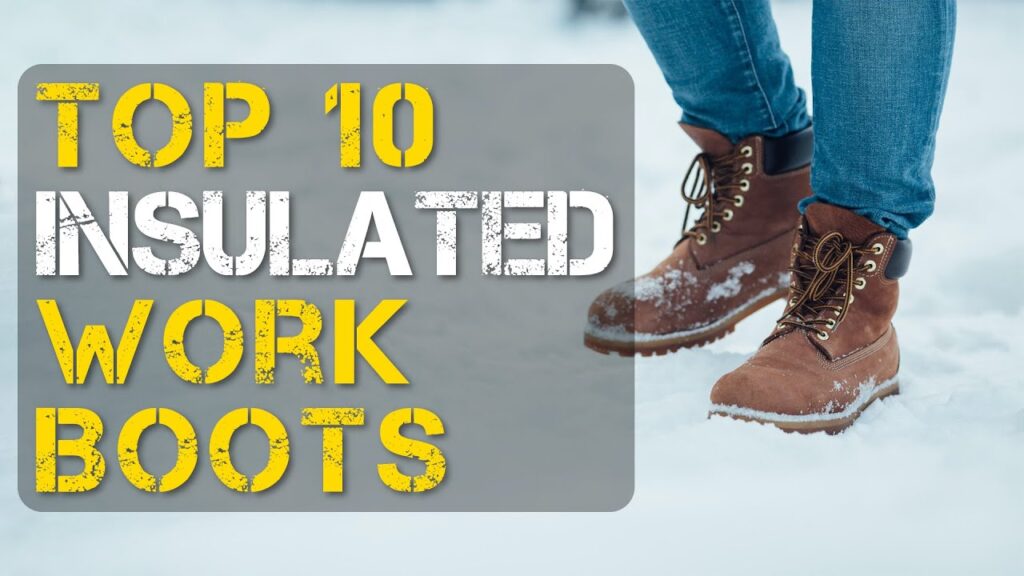
This image is property of i.ytimg.com.
Ease of Use and Convenience
When it comes to choosing the best winter work boots, not only do you want a pair that will keep your feet warm and dry, but you also want them to be easy to put on and take off. After all, you don’t want to waste time struggling with your boots when you could be getting down to business.
Features for Easy On/Off
Look for boots that have convenient features like pull tabs or loops that allow you to easily slip them on and off. Some boots even have side zippers or elastic gussets that provide extra flexibility while putting them on or taking them off.
Weight and Portability
Another important factor to consider is the weight and portability of the boots. You don’t want to feel like you’re carrying around bricks on your feet all day. Look for boots that are lightweight yet sturdy, providing you with the necessary protection without weighing you down.
Cleaning and Maintenance Tips
Lastly, consider the cleaning and maintenance of the boots. Winter work boots often face harsh conditions, so make sure you choose a pair that can withstand frequent cleaning and keep their quality over time. Look for boots with materials that are easy to wipe clean and maintain.
With these factors in mind, you can find the best winter work boots that not only keep your feet warm and dry but also provide ease of use and convenience throughout your workday.
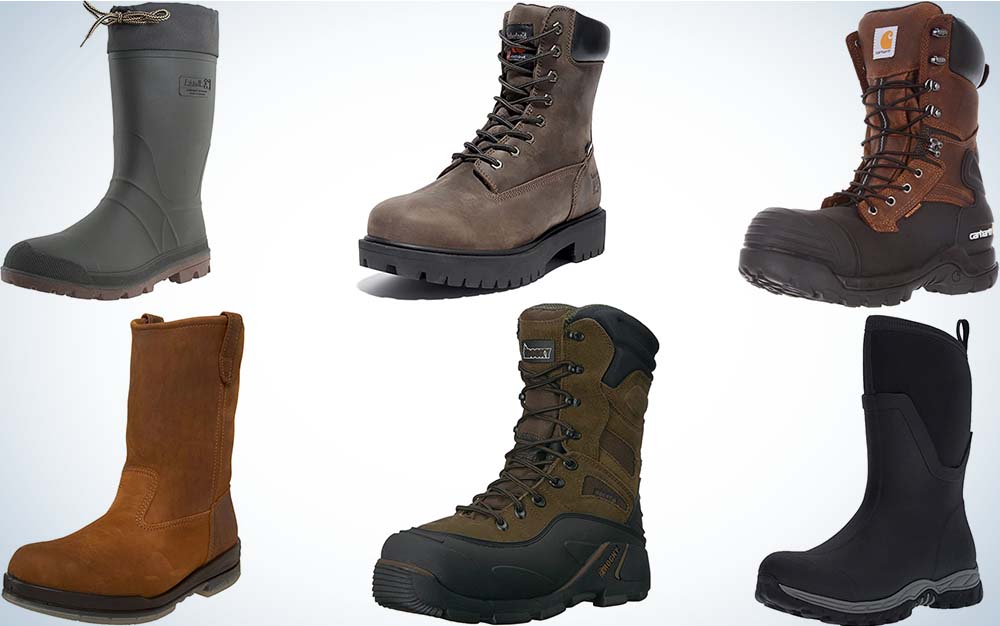
This image is property of www.fieldandstream.com.
Style and Design
When it comes to winter work boots, style and design go beyond just functionality. With a wide range of options available, you can find a pair that not only keeps your feet warm and protected but also adds a touch of style to your work attire.
Variety of Designs and Colors
Winter work boots come in a variety of designs and colors, allowing you to choose a pair that matches your personal style. From classic black and brown to vibrant reds and blues, there is a color for everyone. Whether you prefer a sleek and modern design or a more rugged and traditional look, you can find it among the top 10 best winter work boots.
Different Height Options
Another great feature of winter work boots is the different height options available. Some boots are ankle-length, providing flexibility and freedom of movement, while others are taller and offer additional coverage and protection. Whether you need extra ankle support or prefer a shorter boot, there is an option that suits your needs.
Fashionable Winter Work Boots
Gone are the days when winter work boots were solely functional. Today, you can find boots that not only keep your feet warm and dry but also make a fashion statement. From stylish designs with trendy embellishments to boots that seamlessly blend into your everyday wardrobe, the top 10 best winter work boots offer a range of fashionable options.
With a wide variety of designs, colors, and heights to choose from, winter work boots have evolved beyond their practicality. Now, you can find a pair that not only provides the necessary protection but also complements your personal style. Whether you prefer a sleek and modern design or a more traditional look, the top 10 best winter work boots offer something for everyone. So, why compromise on style when you can have it all? Step into winter with confidence and fashion-forward choices for your work footwear.
Conclusion
When it comes to staying warm and comfortable during the winter months, having the right pair of work boots is essential. In this article, we have explored the top 10 best winter work boots that are available in the market. We have considered various factors like insulation, durability, and traction to compile this list.
Key Considerations for Choosing Winter Work Boots
When choosing winter work boots, it is important to consider factors such as insulation, waterproofing, and grip. Insulation is crucial for keeping your feet warm in cold temperatures, while waterproofing ensures that your feet stay dry even in wet conditions. Additionally, boots with good traction are essential for maintaining stability on slippery surfaces.
Top Picks for Different Winter Work Boot Needs
Our top picks cater to different winter work boot needs. Whether you work in construction, agriculture, or any other industry that requires you to be on your feet all day, we have a boot for you. From heavy-duty insulated boots to lightweight and versatile options, you can find the perfect pair to suit your needs.
Importance of Investing in Quality Winter Work Boots
Investing in high-quality winter work boots is important to ensure both comfort and safety. Quality boots are designed to withstand harsh weather conditions, provide excellent insulation, and offer superior durability. Choosing a reliable and trusted brand will ensure that your boots last for multiple winters.
In conclusion, when it comes to staying warm and protected during the winter months, investing in a pair of high-quality work boots is crucial. Consider your specific needs, prioritize insulation, waterproofing, and grip, and choose a reliable brand to enjoy the comfort and durability that these boots offer. Stay warm and stay safe!






